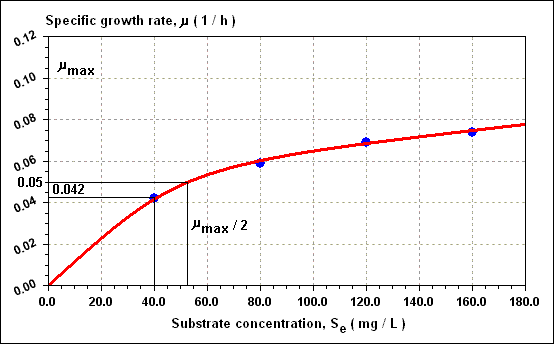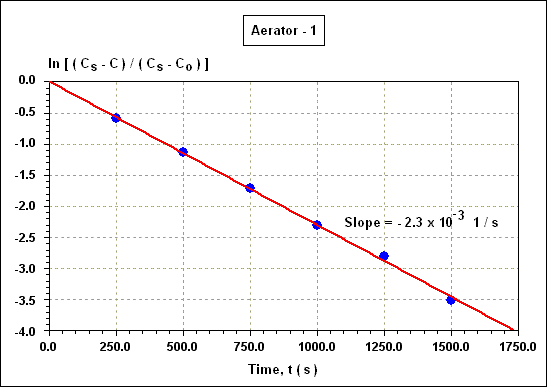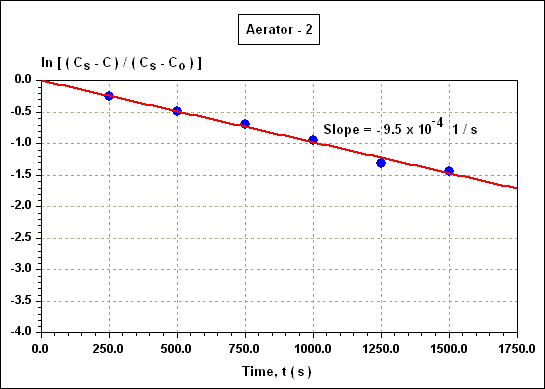MU = [ ( MU MAX ) ( S E ) ] / ( K S + S E )
where ; S E : substrate concentration ( BOD or COD in mg / L ) which may be interpreted as the substrate concentration in the outlet stream from a mixed microbiological reactor ( e.g. an extended aeration tank ), K S : constant ( mg / L ) and has the value of S E when MU = MU MAX / 2, and MU MAX : maximum value of the specific growth rate MU ( 1 / time ). The specific growth rate is defined as ;
MU = ( 1 / X ) ( dX / dt )
where ; X : biomass concentration ( mg / L ) and t : time. Integration of the equation when MU MAX is at its maximum value MU gives ;
ln ( X / X O ) = ( MU MAX ) ( t )
which can be used to give a generation time or the doubling time for a bacterial population.
Example 4-1 :
The value of MU MAX for common sewage bacteria has been quoted as 0.10 1 / h and for the nitrifying bacteria responsible for nitrate formation as 0.08 1 / day. Calculate the generation time for these two types of organisms, and plot the Monod curve for the sewage bacteria if K S = 55 mg / L as COD. Hence find the generation time when S E = 40 mg COD / L.
Calculation :
The doubling time or generation time, t G , is given by ;
t G = ( 1 / MU MAX ) ln ( 2 X O / X O )
Therefore for the wastewater bacterium ;
t G = ln ( 2 ) / 0.10 = 6.9 h
and for the nitrifying organisms ;
t G = ln ( 2 ) / 0.08 = 8.7 days
If ;
MU = [ ( MU MAX ) ( S E ) ] / ( K S + S E )
then for S E = 10 mg COD / L
MU = [ ( 0.10 ) ( 10 ) ] / ( 55 + 10 ) = 0.015 1 / h
and similarly for other values of S E . Figure given below may be drawn from which a value of 0.042 1 / h for MU is found when S E = 40 mg / L. Thus, t G at 40 mg COD / L = 16.5 h.






